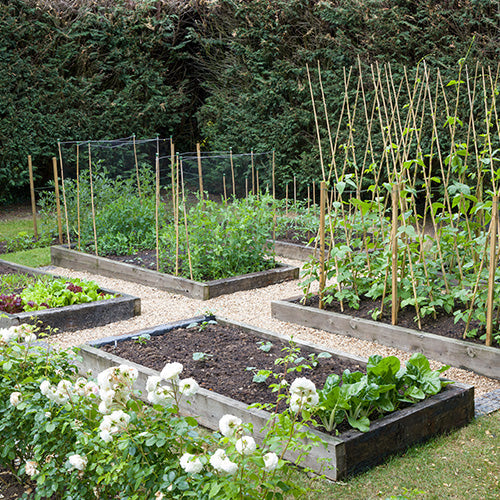Weeding
Yields for most crops will be reduced if weeds are allowed to take over. The plant’s growth will be limited as it competes with the weeds for light, space and nutrients. Provided you have given the patch a good dig at the start of the season and removed all the perennial weeds, the only ones that should be a problem are annuals and the seeds of perennials. These can be easily dealt with if you hoe regularly.
A good, sharp Dutch hoe (which has a blade on a swan-like neck) is a deadly weapon if used frequently to deal with weeds when they are small. Weeds growing amongst rows or in containers will have to be dealt with by hand, which although time consuming, can be very satisfying! Although weeds will affect all crops, they especially need to be dealt with amongst young seedlings and crops that don’t produce a dense leaf canopy such as carrots and onions. Potatoes on the other hand are probably the least affected by weeds, and are sometimes grown to help control weeds.
Mulching
A mulch is simply a soil covering used to conserve soil moisture, help insulate plant roots from extremes of cold and hot weather and help keep weed growth to a minimum. Mulching with black plastic is a good idea for marrows and can be used to produce crops of potatoes without having to earth them up. Most mulches however, are made from organic materials such as manures used to improve soil structure. To be totally effective they need to be around 5cm (2in) thick but mustn’t make direct contact with the plants.














